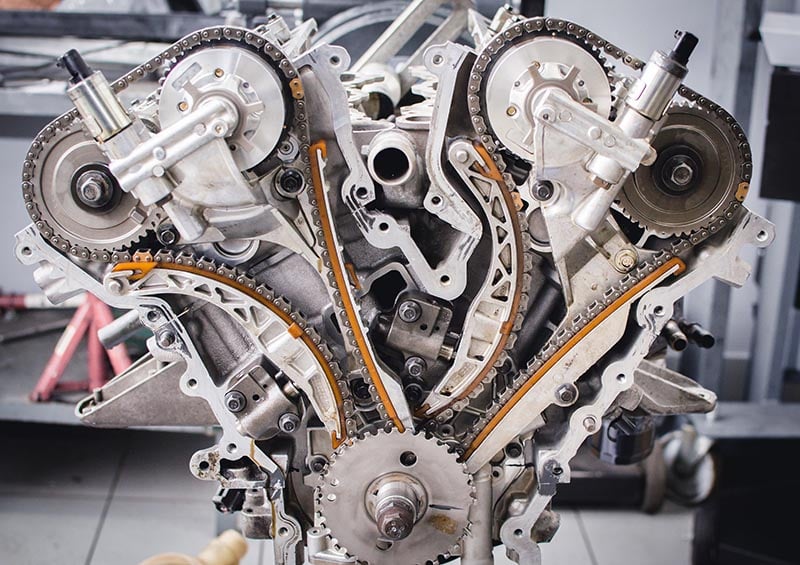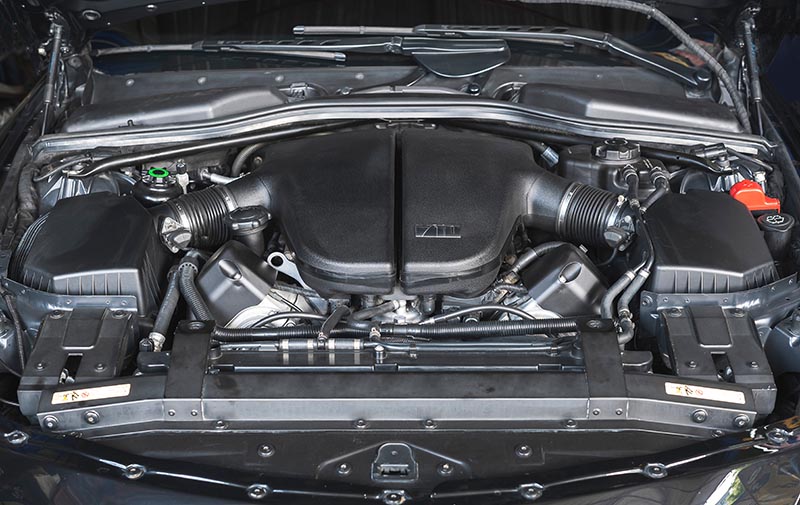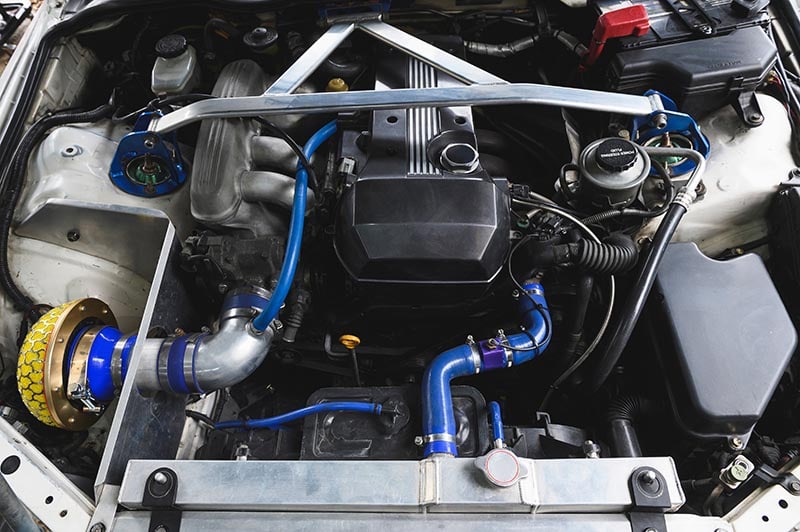What Is a Naturally Aspirated Engine? Pros, Cons, Types, & Uses
-
Pete Ortiz
- Last updated:

A naturally aspirated engine, which is also known as a normally aspirated engine, does not have a turbocharger or supercharger, so they do not rely on air being forced through the system at an increased rate. Although turbochargers were traditionally used in diesel engines while petrol engines were naturally aspirated. However, modern car manufacturers have become increasingly likely to supercharge or turbocharge petrol engines as well.
Although naturally aspirated engines are not usually capable of producing as much power as a similar-sized turbocharged engine, they are more responsive and tend to be cheaper to buy.
How Does It Work?
A naturally aspirated engine is a combustion engine. Sparks fire cylinders and as the cylinders, a mixture of fuel and air is pulled into the engine where it is ignited and powers the car. Whereas a turbocharger can be used to push more air through the cylinders, a naturally aspirated engine cannot rely on this and so the cylinders tend to be larger, therefore allowing more air to be drawn into the cylinders and producing more power.
The number of cylinders that the engine has also played a significant role in determining how much power the engine can produce.

What Are the Different Types of Engine Aspiration?
Engines need air to mix with fuel so that they will ignite. The aspiration of an engine determines how and how much air is combined with fuel and how quickly it is distributed.
- Naturally Aspirated – Naturally aspirated engines use atmospheric air pressure. The alternative are forced induction systems, which means that air is forced into the system, and there are two types of forced induction system engines.
-
Turbocharged – Turbochargers are connected to the exhaust system. As exhaust is emitted, the pressure is used to power a compressor which, in turn, pushes more air into the engine. A turbocharger has to be installed further into the engine so that it can connect to the exhaust, but this type of system is considered very efficient because it uses otherwise wasted energy to further increase the energy output of the engine.
In this type of engine, there needs to be exhaust before extra power can be delivered, which means that if you suddenly accelerate it can take a short time before the extra power is delivered. This is known as turbo lag. - Supercharged – A supercharger connects directly to the engine itself and not through the exhaust system. It is connected by a belt and, as the engine runs, it rotates the belt which powers the compressor. Because it does not rely on the exhaust, this type of engine does not suffer turbo lag, but it uses more energy from the engine, which translates to using more fuel.
Where Is It Used?
Naturally aspirated engines are traditionally used in petrol engines, with turbocharged engines being preferred for diesel engines. This is because diesel engines lack the power of similarly sized petrol engines, and the turbo makes up for this lack of power. However, because naturally aspirated engines either need a larger bore of the cylinder or more cylinders, they can take up more space.
Modern car manufacturers may use turbocharged engines because they save space while delivering more power. Although naturally aspirated diesel engines do exist, they can be sluggish and turbocharged alternatives are generally preferred.

Advantages of Naturally Aspirated Engines
Generally speaking, there are benefits and drawbacks to all these types of engines. The benefits of a naturally aspirated engine are:
- More Reliable – There are fewer working parts and processes in a naturally aspirated engine, which means that there is less to go wrong. Also, the engine runs at a lower temperature, and this all means less wear and tear on the engine.
- Fewer Oil Changes – Turbochargers use oil as their lubricant, and they draw this oil from the engine reservoir. Therefore, a turbocharged engine uses oil more quickly and will need to undergo more oil changes.
- Better Sound – Some people believe that the naturally aspirated engine sounds better and “purer” than one with a turbocharger, although this is personal preference, and some people prefer the whine of a turbo.
Disadvantages of Naturally Aspirated Engines
There are also certain disadvantages to naturally aspirated engines, which is why turbochargers took off and became incredibly popular. It’s also worth noting that modern turbocharged engines have become much more efficient, closing the gap when it comes to reliability.
- Less Fuel Efficient – To get the same amount of power out of a naturally aspirated engine as from a turbocharged engine, it needs bigger or more cylinders in order to push more air and fuel through. This means that a naturally aspirated engine uses more fuel, relatively speaking. Turbochargers can be fitted to smaller engines to get the same performance.
- More Cylinder Space Required – The naturally aspirated engine needs to have either larger cylinders or more of them in order to be able to force the same amount of air through the engine. A bigger engine means more room under the hood and more weight for the car to carry.
Frequently Asked Questions (FAQ)
Can You Turbo a Naturally Aspirated Engine?
Virtually any naturally aspirated engine can accept a turbocharger, although it obviously wouldn’t be naturally aspirated once the turbo has been fitted.
How Much HP Does a Turbo Add?
The exact amount of horsepower that a turbo adds depends on the turbo and especially on the existing performance of the car but you can generally expect an extra 70–150 horsepower from a newly fitted turbocharger.
Do Turbos Shorten Engine Life?
When turbochargers were first introduced, it is true that they shortened the life of the engine because they made the engine work harder and put it under more pressure. However, the modern turbocharger is much more efficient and reliable. Generally, a modern, well-designed, and well-fitted turbocharger will not reduce the life of a reliable engine.
At What RPM Is a Turbo Activated?
A turbocharger turbine has to spin very quickly before it can power the compressor and deliver extra power. Exactly when the turbo kicks in depends on the car, the power it develops, and how you are driving it, but you can generally expect a turbocharger to start doing its thing when you reach about 2,000 RPM.
Generally, smaller turbochargers kick in sooner, at lower RPM, than large ones, and some cars have multiple turbochargers to try and cover the entire rev range of the car.
Conclusion
A naturally aspirated engine does not have a turbocharger or supercharger to artificially push more air through its system. NA engines are most often found on petrol vehicles, rather than diesel, and some potential buyers will ignore naturally aspirated diesels because of a perceived lack of power.
The main benefit of a naturally aspirated engine was that it was more reliable and lasted longer, but modern turbochargers are much more reliable and efficient, which effectively cuts the reasons not to have one fitted in a car. Some purists, however, believe that the noise of a naturally aspirated engine is better and that it delivers power more evenly.
- https://www.carkeys.co.uk/guides/what-is-a-naturally-aspirated-engine
- https://www.parkers.co.uk/what-is/a-naturally-aspirated-engine/
- https://www.mbgilbert.com/blog/how-does-a-naturally-aspirated-engine-work/
- https://www.matfoundrygroup.com/blog/Turbos_Superchargers_and_Naturally_Aspirated_Engines
- https://www.oponeo.co.uk/blog/naturally-aspirated-engines
Featured Image Credit: Konstantin Shadrin, Shutterstock
Contents




